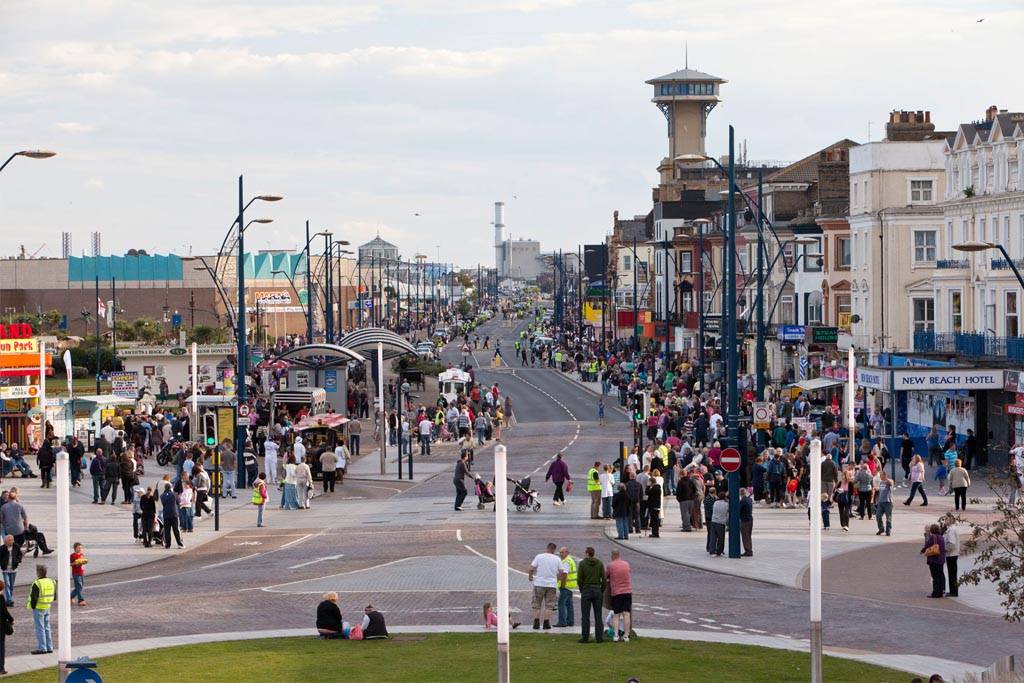Why is Yarmouth called Great? It’s not just because it’s the East Coast’s greatest seaside resort. The town also has a rich heritage stretching back many centuries.

By the late 19th century the town was the largest herring port in the world and in 1913 1,163 fishing boats were operating out of the port – it’s said you could walk across the river boat-by-boat – and the herring were exported as far afield as Russia, India and Africa. On one day along, the fleet brought in 80 million fish!
The herring was also called a silver darling, but in Great Yarmouth we also had unique bloaters. No, that’s not someone who ate all the pies but a herring that is intact. Like losing football captains, herring were usually gutted.

Explore the town’s fishing heritage at the Time & Tide Museum, a former smokehouse. And no, that’s not somewhere Fag Ash Lils used to hang out, it’s where the fish brought into port were cured to give them a longer shelf-life. Keep up!
Britain’s greatest naval commander Horatio Nelson spent time in Great Yarmouth, before the Battle of Copenhagen and on his return to England after the Battle of the Nile. When a guest, the landlady of The Wrestlers Inn on the Market Place offered to change the name to The Nelson Arms, Nelson replied that he only had one. And we like the anecdote about when he received the Freedom of the Borough. At the swearing-in ceremony he put his left hand on the Bible. The clerk said, ‘Your right hand, my lord,’ and Nelson famously replied: ‘That is in Tenerife’.
You might also bump into Lady Hamilton and Nelson at the Great Yarmouth Maritime Festival. It takes place every September along the length of the historic South Quay, featuring tall ships, shanty music, and more pirates than you can shake a cutlass at. Just make sure you don’t get press-ganged!

Great Yarmouth’s Nelson Monument was completed 24 years before the famous London column and statue. There is no truth that architect William Morris jumped off the top after realising that Britannia was incorrectly facing inland. It is in fact facing towards Burnham Thorpe, Nelson’s birthplace in north Norfolk.
In terms of superlatives, Great Yarmouth has the largest parish church in England, St Nicholas Minster, one of the largest market places in the country, the second most complete medieval town wall, the largest rock shop, Docwra’s, and the first football stand at the Wellesley.

The Hippodrome on the Golden Mile is the country’s only complete circus building. When it was opened in 1903 it was called ‘Undoubtedly the finest palace of entertainment in Great Britain’ and dubbed one of the ‘Seven wonders of the British seaside’. It plays host to shows throughout the year, sometimes including the water spectacle that lays beneath the big ring floor!
Peggotty, in Charles Dickens’ David Copperfield called the town ‘the finest place in the universe’ and Robinson Crusoe author Daniel Defoe said the South Quay was ‘the finest in England if not the world’. Talking of authors, Black Beauty author Anna Sewell was born in the town in 1820. You can see her house near St Nicholas Minster.

So yes, Great Yarmouth is the East Coast’s premier seaside resort, as we’ve already said. If you’re here in the summer do the traditional things on the Golden Mile – roll your trouser legs up and have a paddle, eat an ice cream, build a sandcastle. Or stroll along chomping freshly-made, sugared donuts from a paper bag. Order them and salivate as you watch them being made before your very eyes! Bet you can’t eat one without licking your lips. And perhaps follow that up with a stomach-churning ride on a seaside ride.

Okay, riding a Snail at Joyland isn’t exactly stomach-churning, but they’re still faster than you might think! Okay, they’re not. So how about a ride on the wooden 1932 Rollercoaster at the Pleasure Beach instead, otherwise known as ‘The Scenic’. It’s the only remaining ride of its kind in the UK, and only one of two remaining rollercoasters where a brakeman is required to ride the train, as there are no brakes on the track. WOOHOO!!!
On a similar subject – go to the races! It’s on the flat at Great Yarmouth. They’re considerably faster than the donkeys on the beaches. Just remember these are not places to lose your shirt – save that for sunbathing. Giddy up!
Oh, and we can’t resist telling you about the area’s Roman remains at Burgh Castle. Look out over Halvergate Marshes and know that 2000 years ago this was a mile-wide estuary, with another Roman fort at Caister. In those days, before Great Yarmouth wasn’t even a sand bank, and ships could sail almost to the Roman Venta Icenorum town at Caistor St Edmund near Norwich.
Romans, Boudicca and the Iceni in Norfolk

Okay, so why is it really called Great Yarmouth? Simple… in 1272 it was called Magna (Great) Yarmouth to distinguish it from Little Yarmouth across the river Yare, a settlement now called Southtown.
PS Don’t ever call the fabulous family-friendly fun-packed seaside resort just Yarmouth. Yarmouth is on the Isle of Wight.





